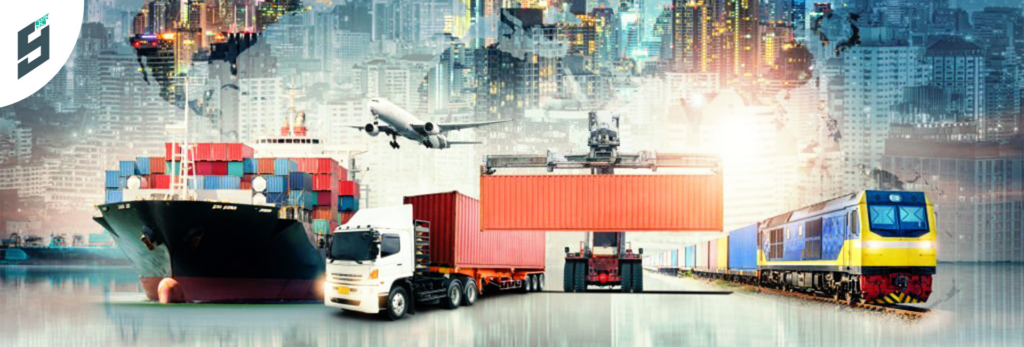
The freight forwarding industry is constantly evolving, and technology has been a key driver of change. Freight forwarders must be proactive in adopting new technologies to remain competitive and meet the demands of their customers in an increasingly complex global supply chain. In this blog, we will examine the impact of technology on the freight forwarding industry and explore some of the key digital tools that are transforming the way goods are transported.
Table of Contents
The Adoption of Digital Technology
– Moving to Online Platforms
The rise of e-commerce has driven a shift towards online platforms for freight forwarders, who are increasingly relying on digital tools to manage their operations. Online platforms allow freight forwarders to automate many of their processes, reducing manual effort and increasing efficiency.
– Internet of Things
The Internet of Things (IoT) is changing the way goods are transported, enabling real-time tracking and visibility throughout the supply chain. Freight forwarders can use IoT technologies such as GPS and RFID to monitor the location and condition of shipments, providing customers with up-to-date information and reducing the risk of lost or damaged goods.
– Utilizing Big Data and Analytics
Big data and analytics are becoming increasingly important for freight forwarders, who are using these tools to gain insights into their operations and make data-driven decisions. By analyzing large amounts of data, freight forwarders can identify trends, forecast demand, and optimize their routes, reducing costs and improving transit times.
Impacts of Technology on the Freight Forwarding Industry
– Artificial Intelligence
Another important digital technology in the shipping and logistics industry is artificial intelligence (AI). AI can be used to analyze customer data and provide insights that enable freight forwarders to make better decisions about their operations. Advanced analytics can also be used to predict customer demand, allowing freight forwarders to optimize their supply chains for cost savings and increased efficiency.
AI can also be used to automate complex processes and reduce manual labor costs. Automation enables freight forwarders to quickly respond to customer requests and AI-powered chatbots can provide 24/7 customer support, enhancing communication between freight forwarders and their customers.
– Improved Efficiency and Productivity
Digital technology is enabling freight forwarders to automate many of their processes, reducing manual effort and increasing efficiency. This leads to improved productivity and reduced costs, enabling freight forwarders to provide more competitive prices to their customers.
– Enhanced Visibility and Transparency
The use of digital tools is providing freight forwarders with greater visibility and transparency throughout the supply chain, enabling them to track shipments in real-time and respond to any issues that arise.
This improved visibility and transparency lead to enhanced customer satisfaction and reduced risk of lost or damaged goods.
– Blockchain Technology
Finally, blockchain technology is becoming increasingly important in the shipping and logistics industry. Blockchain provides a secure platform for tracking shipments across the supply chain, ensuring that data remains accurate and up-to-date.
This improves the visibility and transparency of inventory throughout the supply chain, allowing freight forwarders to quickly locate shipments and ensure successful deliveries for their customers. Additionally, blockchain provides a secure platform for sharing data across the supply chain, which can reduce costs and improve efficiency.
– Increased Competition
The adoption of digital technology has led to increased competition in the freight forwarding industry, as new entrants leverage technology to offer innovative and cost-effective solutions.
– Streamlined Processes
Digital technology is streamlining the processes involved in inbound shipments, reducing the time and effort required to manage these shipments. This leads to improved transit times and reduced costs, enabling freight forwarders to offer more competitive prices to their customers.
– Radio Frequency Identification
Radio Frequency Identification (RFID) is a type of digital technology that is increasingly being used in the shipping and logistics industry. RFID tags are attached to each shipment and contain a unique identifier that allows for tracking, monitoring, and managing inventory throughout the supply chain.
RFID tags also provide real-time status updates on shipments across the supply chain, allowing freight forwarders to forecast delivery times. This improves customer satisfaction and reduces risks associated with inbound shipments. With RFID technology, freight forwarders can ensure that their customers receive their shipments on time, every time.
– Improved Accuracy and Compliance
The use of digital tools is improving the accuracy and compliance of inbound shipments, reducing the risk of errors, and ensuring that shipments are in compliance with all relevant regulations and standards. This leads to reduced risk and increased customer satisfaction.
– Better Collaboration
Digital technology is enabling better collaboration between freight forwarders, suppliers, and other stakeholders involved in inbound shipments. This leads to improved communication and coordination, reducing the risk of delays and ensuring that shipments are delivered on time.
Conclusion
The impact of technology on the freight forwarding industry has been profound, and the use of digital tools is transforming the way goods are transported. Freight forwarders who embrace technology and leverage digital tools to optimize their operations will be better positioned to remain competitive and meet the demands of their customers.
As the global supply chain continues to evolve, technology will play an increasingly important role in the success of the freight forwarding industry.


